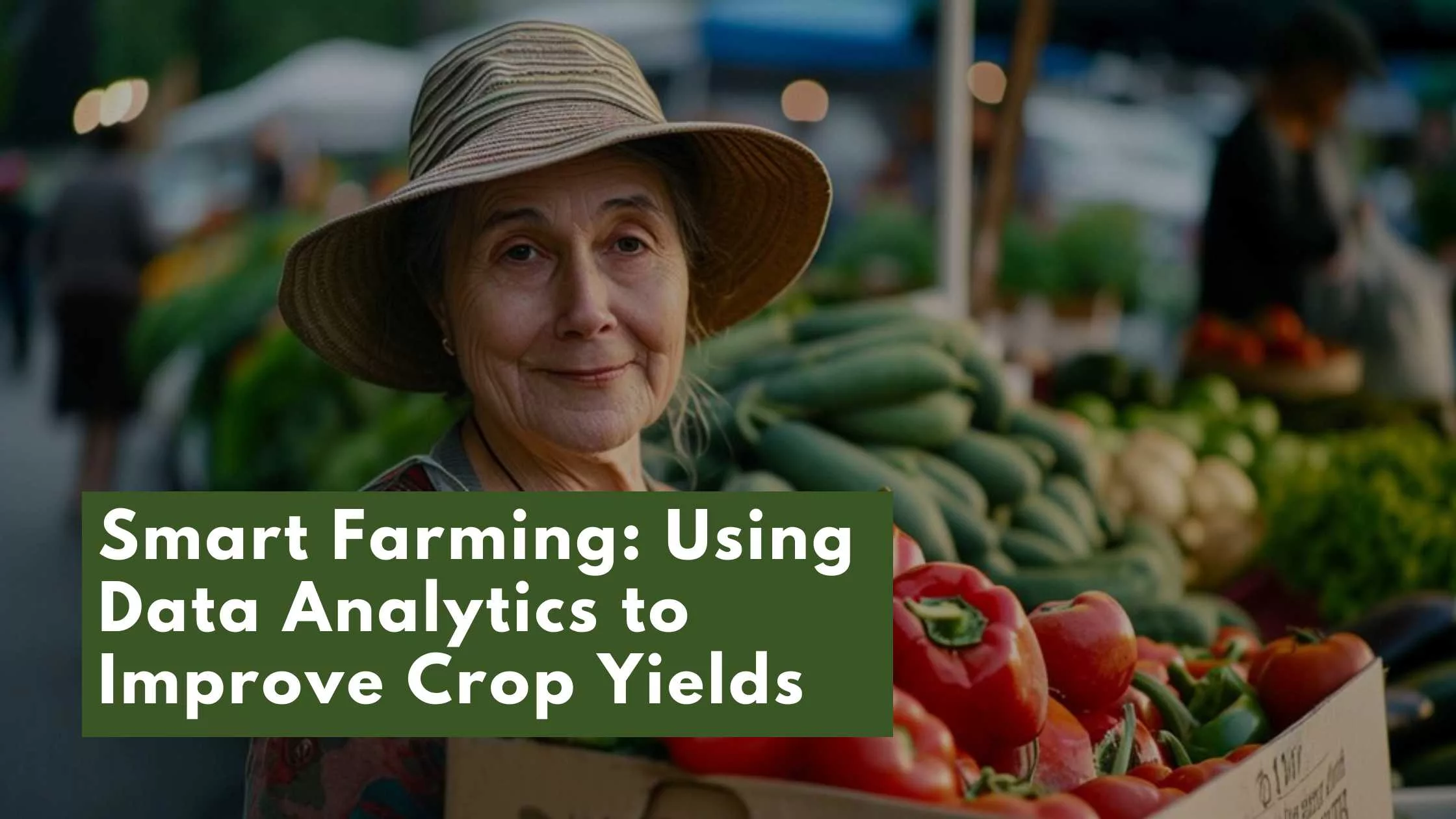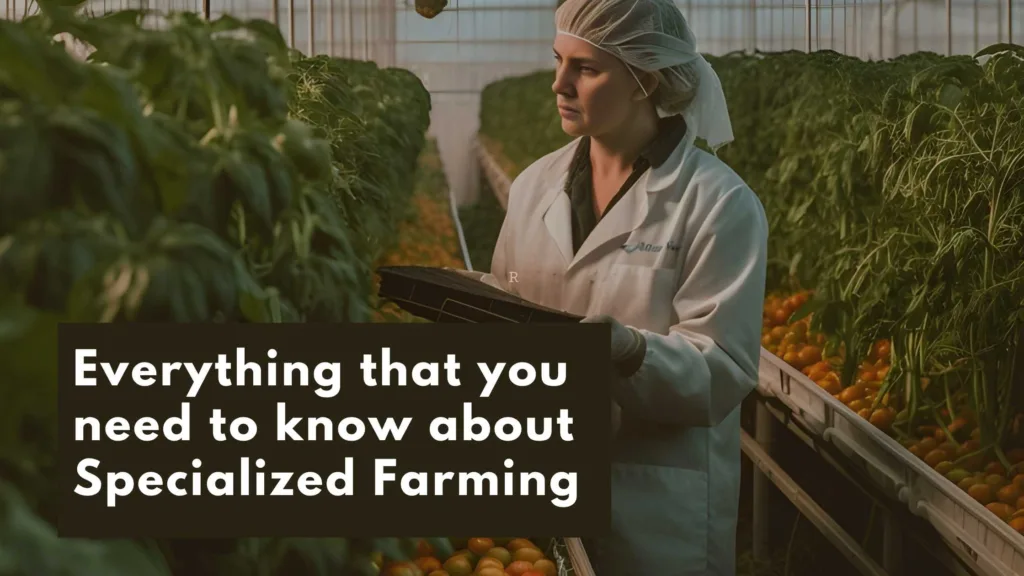Introduction
Technology improvements have revolutionized agriculture, with smart farming being one significant invention. Data analytics improve “smart farming” methods, boost crop yields, and assure sustainability. Farmers use data-driven decisions to increase production, decrease resource waste, and limit hazards by using sensors, drones, and sophisticated analytics.
In this blog, we will examine how data analytics change the agricultural environment and how it results in greater crop yields and a more sustainable future. It also explores the possibilities of smart farming.
The need for smart farming
Traditional agricultural practices rely on hands-on labor, experience, and intuition. However, these approaches constrain their capacity to address complex agricultural issues, including shifting weather patterns, insect infestations, and nutrient deficits in the soil. By using many technologies and data analytics, smart farming overcomes these limits and increases farming’s accuracy, effectiveness, and productivity. Agriculture is becoming popular due to the expansion of the global population and the need to produce more food.
Innovative farming methods in agriculture
-
Sensors and the Internet of Things (IoT) in Agriculture
Smart farming relies on sensor technologies and the Internet of Things (IoT) to gather real-time field data. Sensors placed in the soil, plants, and cattle offer valuable data on moisture, temperature, humidity, nutrient levels, and livestock health. These sensors allow farmers to track and analyze data remotely by wirelessly transmitting it to a central database or cloud-based platform. IoT integration in agriculture speeds up decision-making and enables farmers to take preventative action based on fast and reliable data.
-
Imaging Technologies and Drones
Smart farming now requires drones with image technology, like multispectral and infrared cameras. To identify the changes in crop health, water stress, and insect damage, they take pictures of fields in high resolution. Farmers can pinpoint particular problem areas and take focused interventions by employing machine learning and image analysis technologies. In addition to crop monitoring, yield estimation, and even pesticide application, drones also help to minimize manual labor and maximize resource efficiency.
-
Analytics of Big Data and Predictive Models
Farming relies on data analytics to assist farmers in turning raw data into valuable insights. Farmers may decide on irrigation, fertilization, and pest management using modern analytics techniques like machine learning and predictive modeling. To produce precise predictions and suggestions, predictive models consider various factors, including historical data, weather projections, and crop-specific requirements. These models allow farmers to maximize profitability, optimize inputs, and reduce yield losses.
Benefits of smart farming
Several advantages of smart farming transform conventional agricultural methods and support sustainable farming systems:
Increased crop yields and quality:
With the help of intelligent farming, crops can be precisely monitored, allowing for the best possible circumstances for growth and resource use. This results in higher yields and better-quality products.
Resource Efficiency:
Farming reduces resource waste by employing data analytics. Farmers can precisely administer inputs like water, fertilizer, and insecticides, which lowers costs and has a minor negative impact on the environment.
Early problem detection:
Intelligent farming technology offers real-time information on crop health, assisting farmers in finding diseases, pests, and nutrient deficits as soon as possible. The need for significant chemical treatments decreases, and crop losses are minimized with prompt intervention.
Operational Efficiency:
Farm operations are streamlined through automation and remote monitoring, which reduces human labor and saves time. Farmers can remotely manage irrigation, monitor their animals, and base their decisions on current information.
Climate Resilience:
Farming enables farmers to adjust to climatic changes by incorporating weather forecasts and historical data. This makes planting and watering schedules more efficient and helps control hazards related to extreme weather occurrences.
Sustainable Techniques:
Smart farming promotes sound techniques like organic pest control and careful nutrient management. This lessens dependency on synthetic chemicals and promotes environmentally friendly farming practices.
Increased Profitability:
Smart farming increases farmers’ profitability and enables them to attain economic sustainability by optimizing inputs, cutting waste, and raising yields.
Data-Driven Decision Making:
Farming uses data analytics to produce actionable insights, enabling farmers to confidently decide on crop management, resource allocation, and marketing tactics.
Challenges and Future Directions
Smart farming has a lot of potential but has specific difficulties. Small-scale farmers may find the initial expenses of deploying innovative agricultural technology exorbitant. Substantial training and technological know-how are also required to utilize the data at hand fully. Additionally, data security and privacy issues must be resolved to guarantee the security of sensitive agricultural data.
Despite these difficulties, smart farming has a bright future. The broad use of this technology is fueled by ongoing technological development, improved accessibility, and stakeholder cooperation. Smart farming’s capabilities improve with integration with other cutting-edge technologies, such as blockchain and artificial intelligence, leading to a more robust and sustainable agricultural industry.
Conclusion
Data-analytics-driven smart farming is transforming the agriculture sector. Farmers may gather and analyze real-time data using sensors, drones, and advanced analytics to make wise decisions. This data-driven strategy improves crop yields, maximizes resource use, and reduces hazards, resulting in farming methods that are more productive and sustainable.
Despite specific difficulties, smart farming has enormous promise. Smart agriculture will be essential to fulfilling the rising global food demand while ensuring a more resilient and sustainable agricultural future as technology advances. By adopting intelligent farming practices, farmers can grow healthier crops, reduce waste, and help the world become more food secure.



